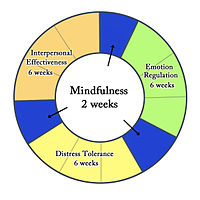
Photo from wikipedia
Suicidal behaviors in adolescents stem from complex processes deeply rooted in various spheres of life and functioning. The study was aimed at assessing the relationship between selected negative emotions, the… Click to show full abstract
Suicidal behaviors in adolescents stem from complex processes deeply rooted in various spheres of life and functioning. The study was aimed at assessing the relationship between selected negative emotions, the quality of sleep, the level of perceived stress as well as stress coping strategies and suicidal ideation and attempts among high school students. The examined group consisted of adolescents aged 16–18 recruited by social-media groups in Poland. The study was based on a diagnostic survey with the application of CAWI method. The other research tools applied in the study included: Hospital Anxiety and Depression Scale—Modified, Perceived Stress Scale-10, How do you cope?—Questionnaire, Athens Insomnia Scale as well as the authors’ own questionnaire on suicidal ideation and suicide attempts. Anxiety, depression, aggression and insomnia as well as a high level of stress were statistically more common in girls than in boys (p < 0.001). The high level of negative emotions and insomnia, in turn, increased the risk of suicidal ideation (OR = 3.59, 95% CI: 2.13–6.06 and OR = 2.35, 95% CI: 1.60–3.46), as well as suicide attempts (OR = 6.29, 95% CI: 2.93–14.80 and OR = 3.29, 95% CI: 2.07–5.35). Additionally, high level of stress was associated with more than twice larger odds of suicidal ideation (OR = 2.26, 95% CI: 1.13–4.63). Significantly higher prevalence of suicidal ideation (p = 0.017) and suicide attempts (p = 0.016) was observed in girls. A high level of negative emotions and stress accompanied by a low quality of sleep are factors predisposing people to suicidal ideation and attempted suicide.
Journal Title: Healthcare
Year Published: 2023
Link to full text (if available)
Share on Social Media: Sign Up to like & get
recommendations!